A Brief History of AI: From Turing to ChatGPT
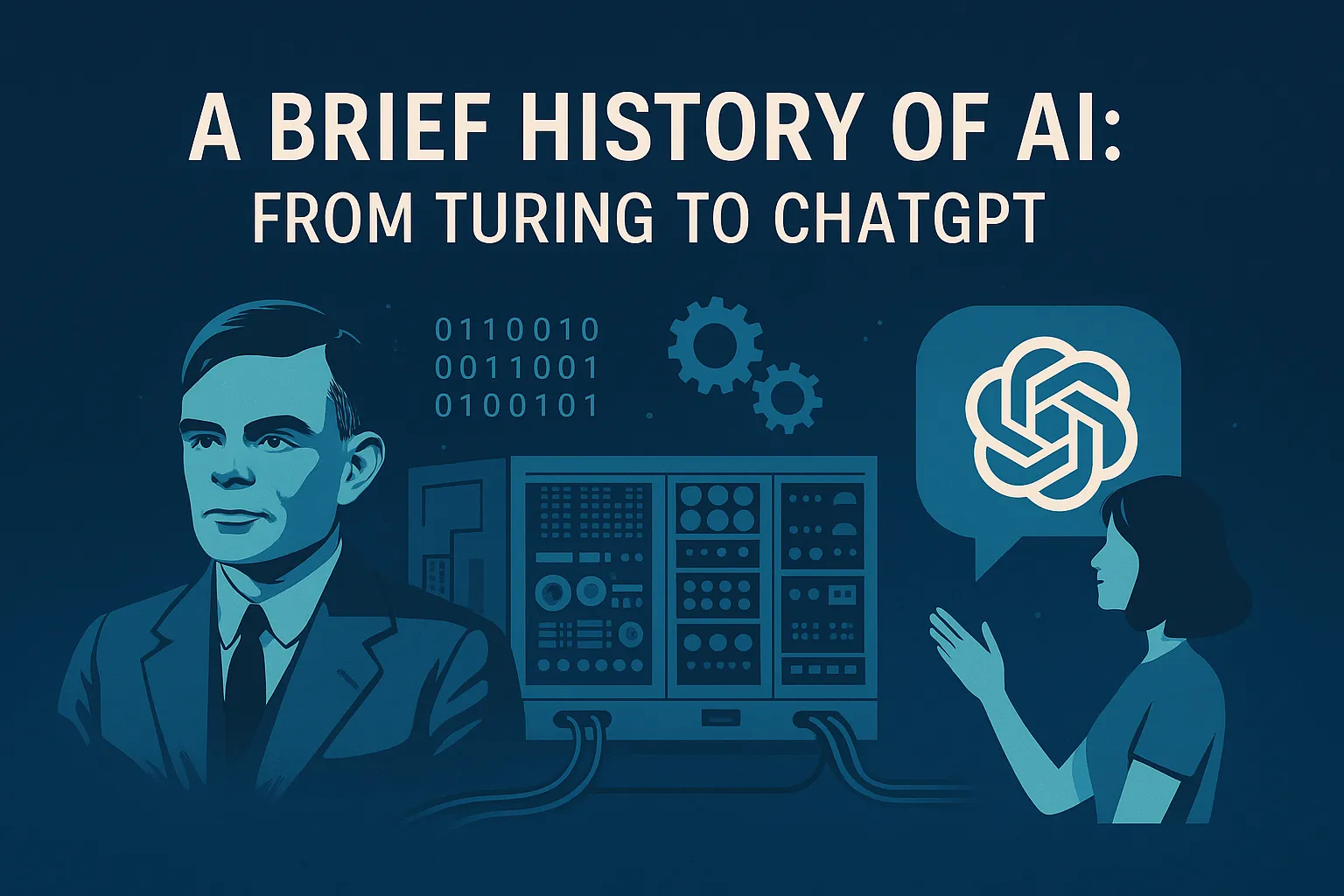
Introduction
Artificial Intelligence (AI) has emerged as one of the most transformative technologies of the 21st century, yet its roots extend far deeper into history than many realize. From ancient myths about intelligent automatons to today's foundation models like ChatGPT and Gemini, the quest to build machines that mimic or exceed human intelligence is a story of ambition, breakthroughs, setbacks, and imagination. This article offers a deep dive into that journey — tracing the milestones, paradigms, and revolutions that shaped the field of AI as we know it today.
Before AI: Mythology, Logic, and Mechanism
The human desire to create artificial minds goes back to mythology. The Greeks imagined Talos, a bronze automaton that guarded Crete. In medieval Islamic culture, inventors like Al-Jazari designed intricate mechanical devices that mimicked life. But these early automata were more symbolic than scientific.
The groundwork for true AI came with the development of formal logic and computation. Philosophers like René Descartes and mathematicians like Gottfried Wilhelm Leibniz envisioned reasoning as a mechanical process. In the 19th century, George Boole formalized Boolean Logic, providing a bridge between abstract reasoning and electrical circuits — the bedrock of modern computing.
The Turing Era: Machines That Think?
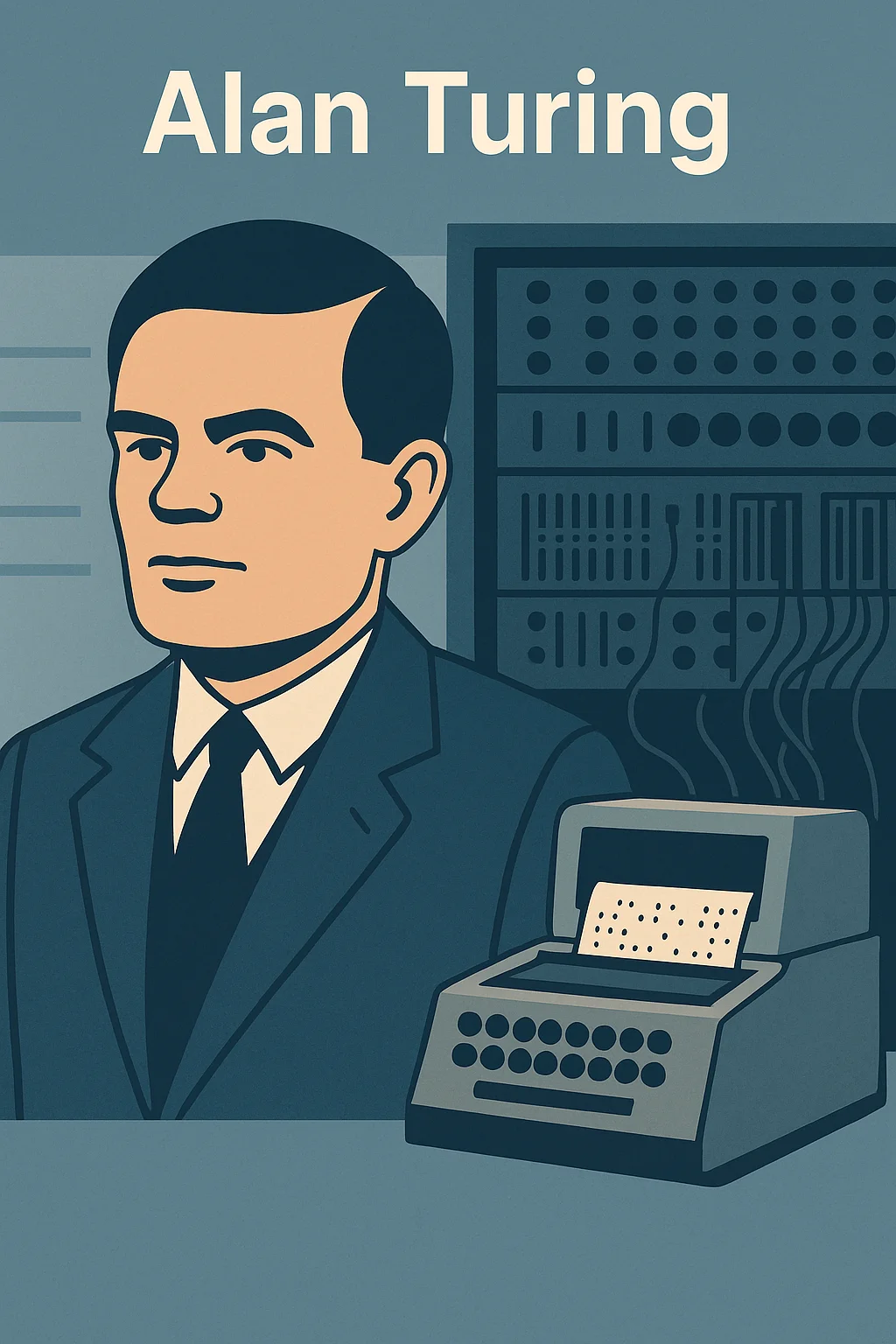
The modern AI timeline begins with Alan Turing. In his landmark 1950 paper,“Computing Machinery and Intelligence”, Turing proposed that a machine could be said to "think" if it could carry on a conversation indistinguishable from a human. This idea became the Turing Test, still debated as a benchmark for machine intelligence.
At this point, digital computers had only just been invented. Machines like the ENIAC were primarily used for number-crunching. But Turing, and a few others, recognized that these devices might one day simulate thought itself.
The Birth of Artificial Intelligence (1956)
In 1956, a group of scientists gathered at Dartmouth College in New Hampshire for a summer research project. Organized by John McCarthy, Marvin Minsky, Nathaniel Rochester, and Claude Shannon, the event gave birth to the term “Artificial Intelligence.” They proposed that “every aspect of learning or any other feature of intelligence can in principle be so precisely described that a machine can be made to simulate it.”
This ambitious proposal set the stage for early AI research. In the following decade, researchers built programs that could solve algebra problems, play chess, and prove mathematical theorems.
Symbolic AI and Early Enthusiasm (1950s–1960s)
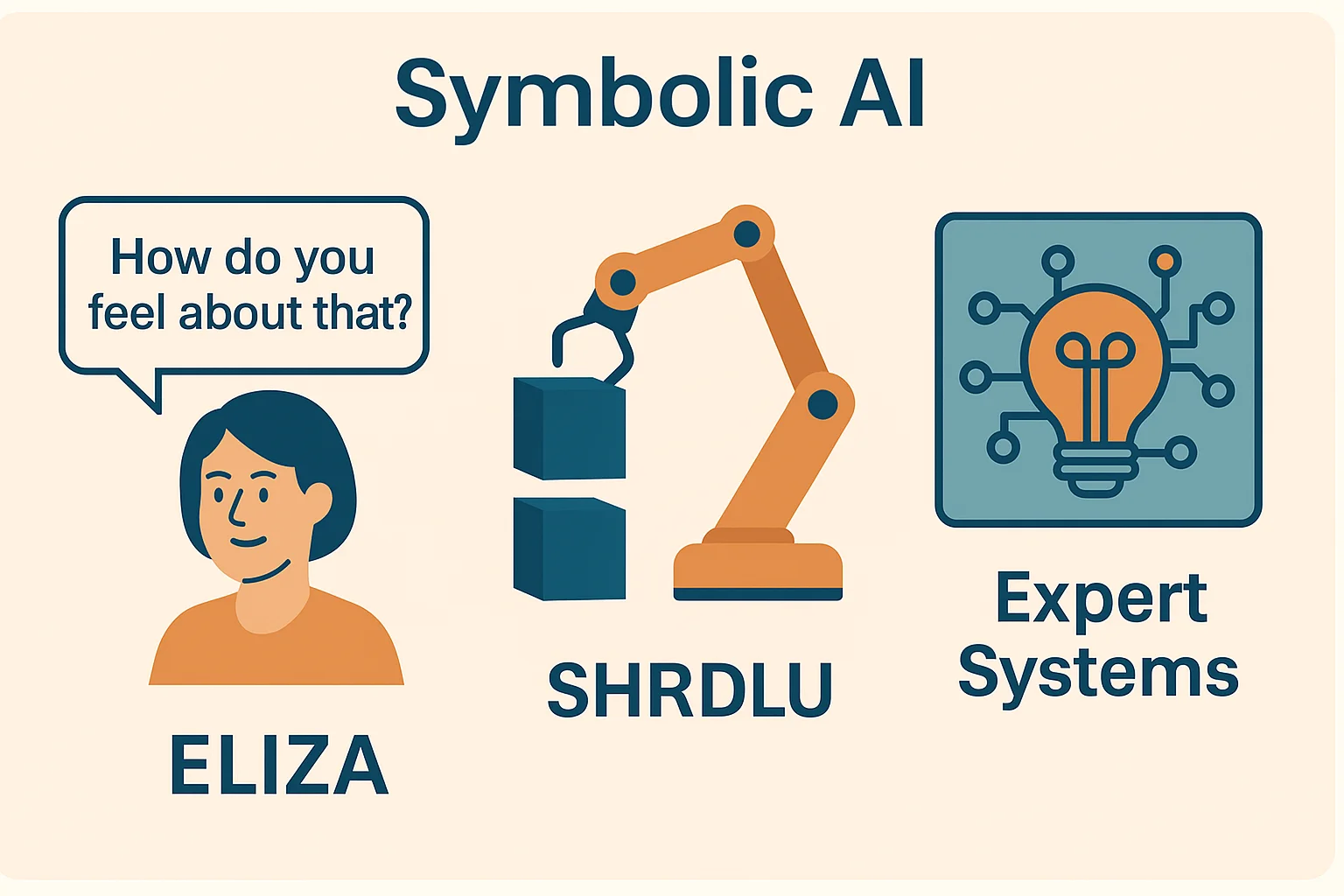
Early AI relied on what’s now called symbolic AI — representing knowledge through symbols and manipulating those symbols using rules. Programs like the Logic Theorist and SHRDLU demonstrated limited success in constrained environments. ELIZA (1966), a chatbot simulating a psychotherapist, astonished the public but operated entirely via scripted pattern matching.
These successes created optimism. Researchers predicted that artificial general intelligence (AGI) would arrive within decades — perhaps even by the 1970s. But these predictions would soon clash with reality.
The First AI Winter (1974–1980)
Progress stalled as AI systems failed to scale. Programs that performed well in toy problems broke down in real-world environments. Language understanding systems couldn’t deal with ambiguity. Vision systems struggled outside lab settings.
The British government’s Lighthill Report criticized the field’s lack of tangible progress. Funding cuts followed, especially in the US and UK. This period became known as the first “AI Winter,” marked by reduced enthusiasm, shrinking research budgets, and skepticism from outside disciplines.
Expert Systems and the Second AI Winter (1980s–1990s)
AI bounced back in the 1980s with the rise of expert systems — rule-based programs designed to mimic the decision-making of human experts. MYCIN, for example, could recommend antibiotics based on symptoms and test results.
Companies invested heavily in building such systems, and for a time, AI seemed commercially viable. But expert systems were fragile and costly to maintain. Rules couldn’t adapt to new information. When the promises of commercial AI failed to materialize, funding dried up once again. A second AI winter set in, particularly after the collapse of the Lisp machine market.
The Rise of Machine Learning (1990s–2000s)
Out of the second winter came a new paradigm: **machine learning**. Instead of hand-coding rules, researchers began training algorithms on data. This shift was driven by increasing data availability and more powerful computers. Algorithms like decision trees, k-nearest neighbors, and support vector machines led the way.
AI systems began to excel in narrow applications: spam detection, document classification, handwriting recognition, and fraud detection. Google and Amazon adopted ML techniques to personalize search and recommend products. Though most users didn’t realize it, AI was starting to affect daily life.
The Deep Learning Breakthrough (2010s)
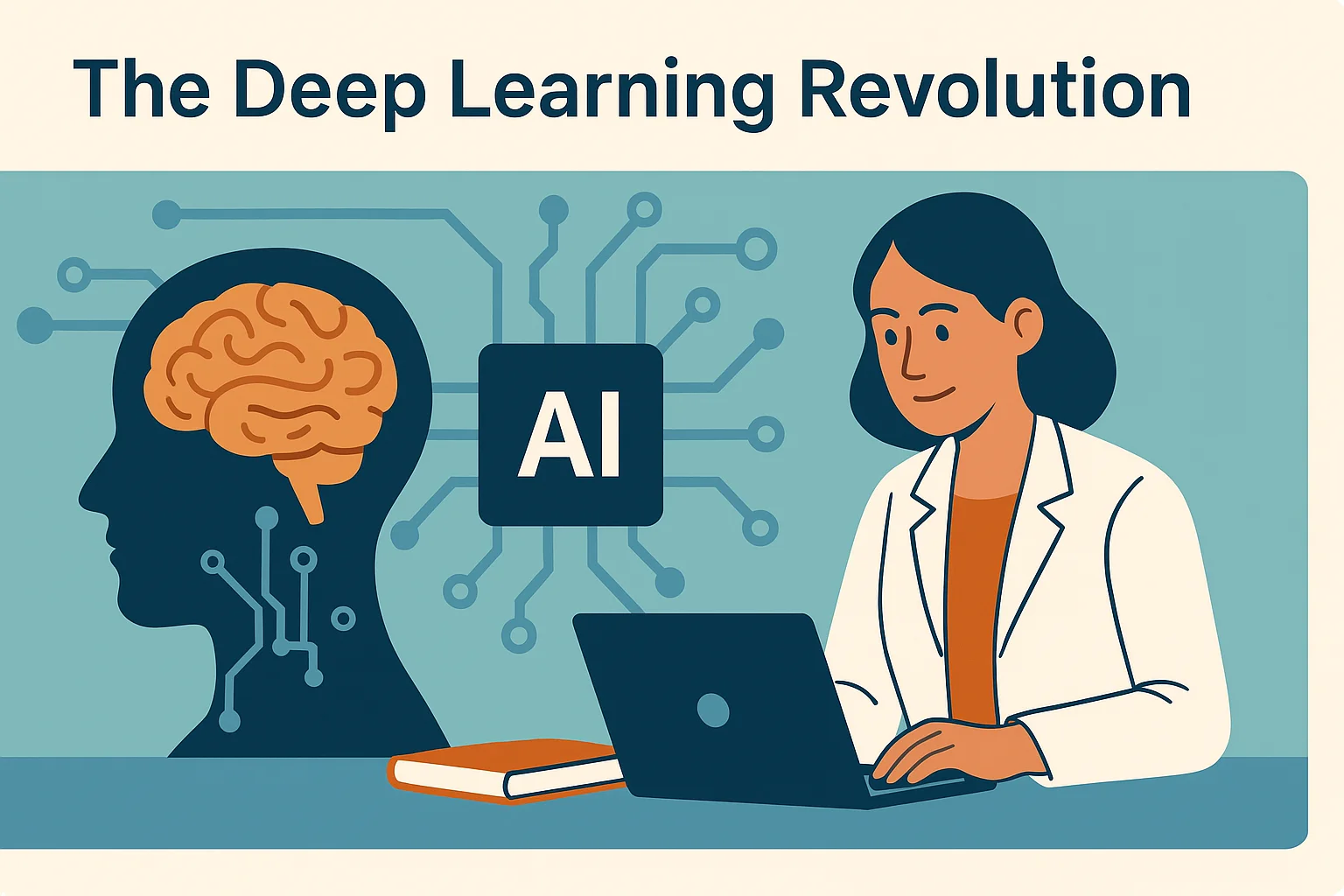
Deep learning, a subfield of ML based on neural networks with many layers, ignited a revolution. Although neural nets dated back to the 1950s, they underperformed for decades due to limited computing power and data.
In 2012, a neural network called **AlexNet** dominated the ImageNet competition by recognizing images with dramatically better accuracy than previous systems. Its success was made possible by GPUs and large datasets. This triggered a wave of innovation in computer vision, speech recognition, and NLP.
Companies like Google, Facebook, and Baidu poured resources into deep learning. In a few years, AI went from niche to essential in industries ranging from advertising to healthcare.
The Transformer Era (2017–2020)
The next milestone came in 2017 with the paper “Attention Is All You Need”. It introduced the transformer, an architecture that dramatically improved language understanding. Unlike earlier models, transformers could process entire sequences of text at once — capturing complex relationships across long documents.
This led to models like **BERT** (Google), **GPT-2** (OpenAI), and **T5** — capable of generating, translating, and summarizing text. GPT-2 caused controversy when OpenAI initially withheld its release, citing fears of misinformation and abuse. These models were increasingly trained on billions of words, requiring massive infrastructure and expertise.
The ChatGPT Moment (2022–Present)
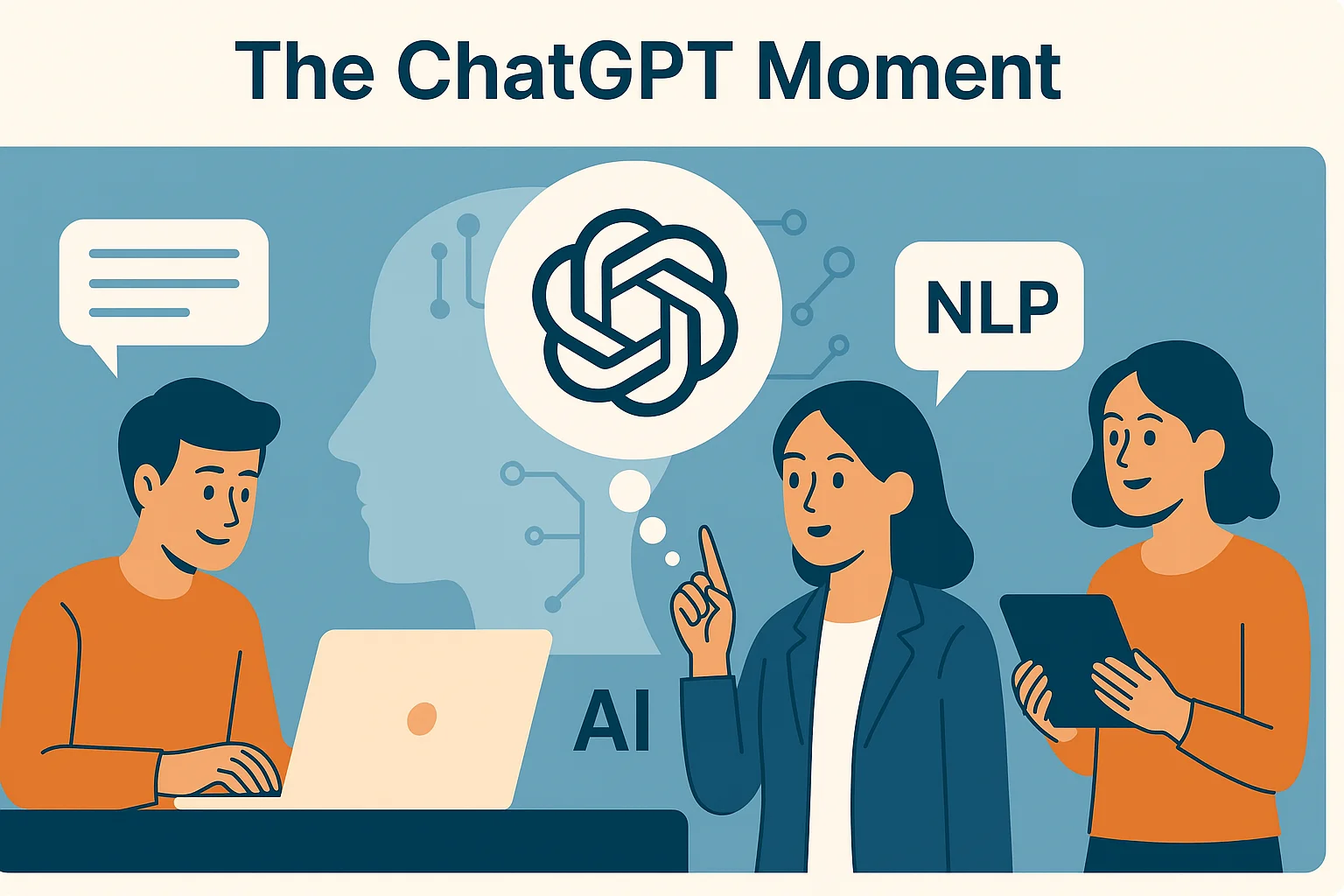
Everything changed with the launch of **ChatGPT** in November 2022. Built on GPT-3.5 and later GPT-4, the chatbot offered a fluid conversational interface. It could write emails, answer questions, generate code, and simulate dialogue — sparking a public AI boom.
Within months, ChatGPT had over 100 million users. Companies integrated LLMs into search engines, writing assistants, and productivity tools. Meanwhile, competitors like Claude (Anthropic), Gemini (Google), and LLaMA (Meta) entered the race.
This period also saw concerns grow around AI safety, misinformation, job displacement, and copyright. Governments, educators, and tech leaders scrambled to define policy and regulation. AI had gone mainstream — and with it came both excitement and uncertainty.
Conclusion
The story of AI is not linear — it's a series of leaps, setbacks, and reinventions. From ancient automatons to neural networks, humanity’s dream of thinking machines has evolved alongside our understanding of intelligence itself. What began as a philosophical question became a global industry. And while general AI remains elusive, its trajectory shows no signs of slowing.
As we enter a new era filled with foundation models and multimodal systems, remembering the path behind us is essential. The history of AI offers not only context — but caution. It reminds us that hype must be balanced with humility, and power with responsibility.